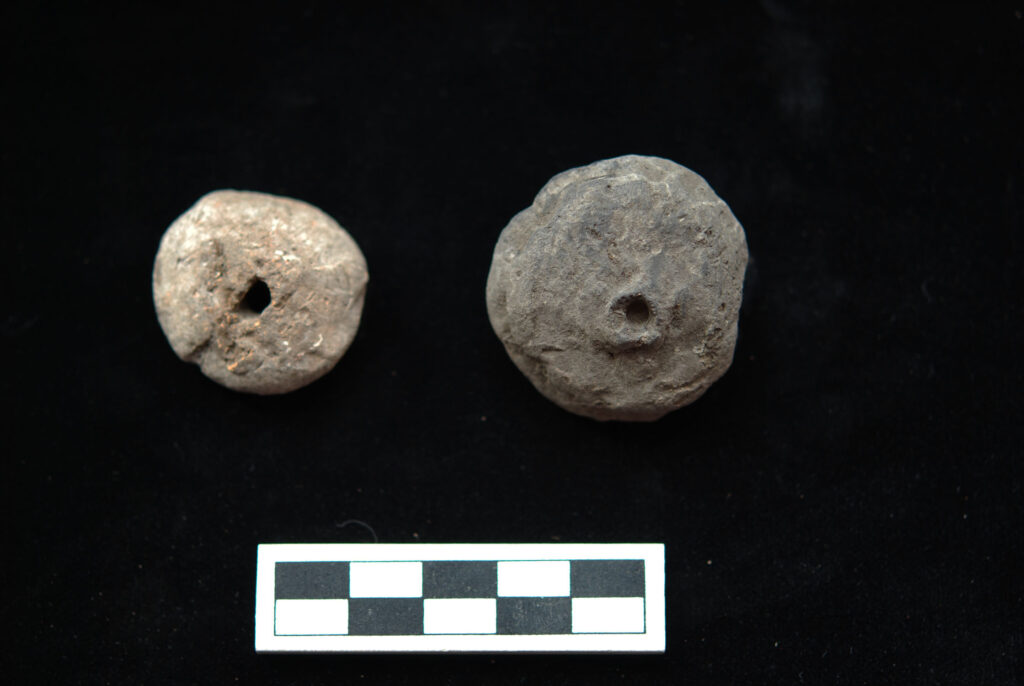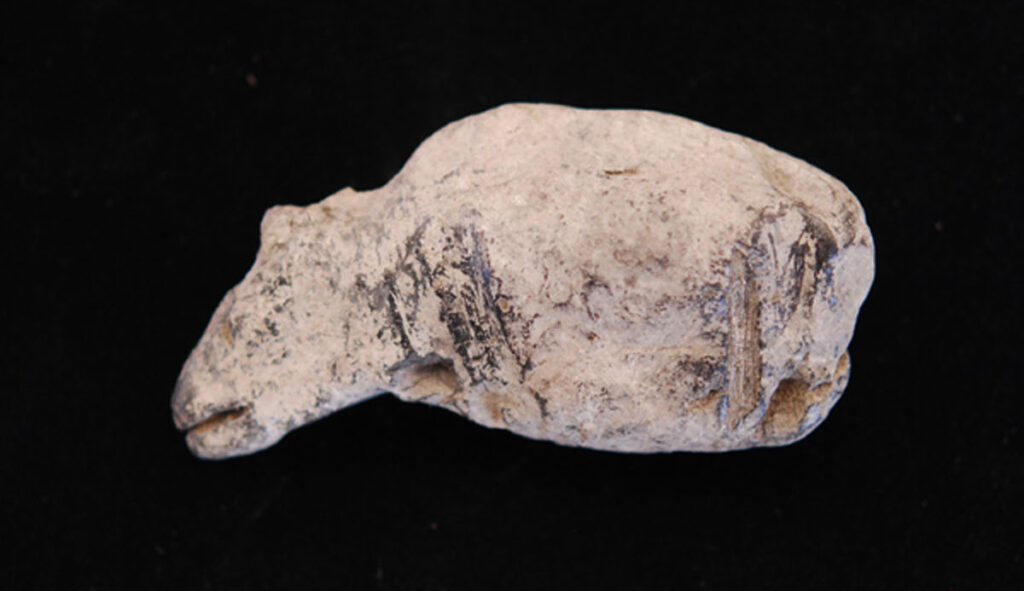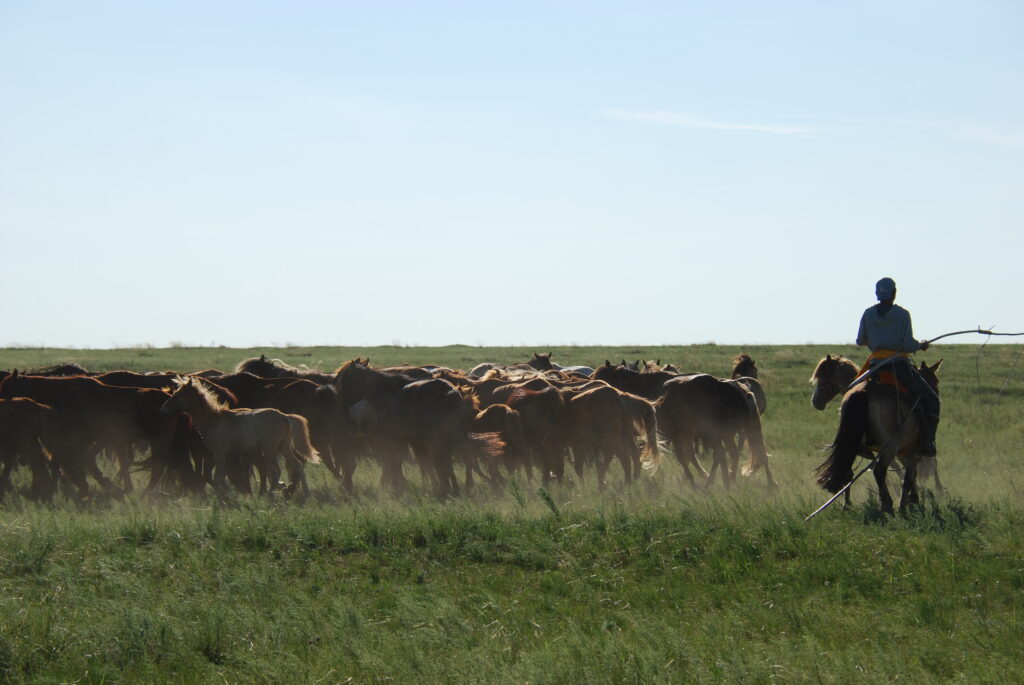Theme 3/
Tamsagbulag: Frontiers in Sedentism and Domestication
Summary/Findings
Tamsagbulag is located in the far eastern steppes and is the only site in Mongolia with evidence of settled communities (Zhao et al. 2021). Here, along a high river terrace (TB, Fig. 1 – Aerial) people built homes to live for months or even years at a time. Tamsagbulag is located in the Amur Basin region, a territory associated with some of the earliest evidence for settled communities in East Asia and some of the earliest evidence for pottery use in the world. Houses were rectangular and dug into the ground (TB, Fig. 2 – House). Other dwellings were set-up on the surface (TB, Fig. 3 – Surface Dwelling) and used outdoor clay-lined hearths (TB, Fig. 4 – Hearth). They were thought to have been entered through the roof and contained hearths, storage pits, and sometimes even human burials. All that digging required the use of ground stone digging weights to break through the hard soils (TB, Fig. 5 – Digging Weight).
Unlike most other sites in the Amur Basin, the preservation of bone is excellent and allows us to see what people were eating. The results are fascinating: the vast majority of animal remains belong to aurochs or wild cattle (TB, Fig. 6 – Cattle Bones). They even made clay sculptures of these animals (TB, Fig. 7 – Sculpture). This point so striking that archaeologists who excavated the site in the 1940s and 1960s believed that this site belonged to agropastoralist people – or farmers who specialized in raising cattle. However, our recent research shows that the site was occupied from about 8500-7200 years ago – more than 2000 years before domesticated cattle were introduced to East Asia! (Zhao et al. 2021)
Were local people able to live at this site year-round because they tamed wild cattle? This is exactly what we hope to discover. Even if cattle were not tamed and kept by local people, the fact that people were able to live in settled communities without any evidence for farming or for intensive use of storable foods like fish, nuts or seeds is remarkable. How could people have survived the long, harsh winters? Did they hunt and butcher large herds of cattle and then preserve the meat the way that Indigenous people did on the North American Plains? There are several reasons why this does not fit, but we still have lots of work to do.
In order to understand human-cattle relationships at Tamsagbulag, we are using advanced chemical analyses of animal bones to see what the animals ate at different times of year, and of soils to see whether there is any evidence that cattle were kept living near human habitation sites (TB, Fig. 8 – Cow). We are also using genetic testing to understand how populations of cattle changed in eastern Mongolia over time. This will help us understand whether wild cattle hunted by humans were intentionally bred both before and after the introduction of domesticated cattle from the West. The results of this study will also contribute significant data to ongoing collaborative research in eastern Mongolia about the relationship between climate driven environmental change and transitions in human land-use and diet (link to Diet Breadth and Ecology project page).
Publications:
- 2021 Zhao, C., L. Janz, D. Bukhchuluun, and D. Odsuren. Neolithic pathways in East Asia: early sedentism on the Mongolian Plateau. Antiquity. DOI 10.15184/aqy.2020.236
- 2015 Odsuren, D., D. Bukchuluun, L. Janz. Preliminary results of Neolithic research conducted in eastern Mongolia. Studia Archaeologica 35: 72-96. (in Mongolian with English abstract)


















